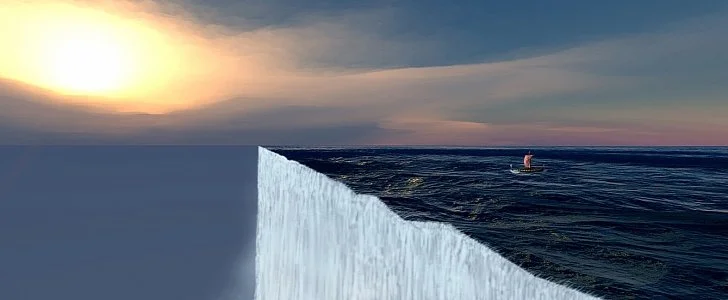
Introduction
In a move that has sparked both curiosity and skepticism, a group of Flat-Earth enthusiasts is planning an expedition to Antarctica. Their goal? To reach what they believe is the “edge of the world.” This ambitious journey aims to challenge the established scientific consensus that the Earth is a sphere and to provide tangible evidence for their flat-Earth theory.
The Flat-Earth Theory
Fundamental Beliefs
Flat-Earthers hold the unconventional belief that the Earth is not a globe, but rather a flat, disk-shaped plane. Key tenets of their theory include:
Flat Plane: The Earth is a flat surface, not a spherical object.
Antarctic Ice Wall: A massive ice wall surrounds the perimeter of the flat Earth, holding the oceans in place.
Conspiracy Theories: Mainstream science, space agencies, and governments are purportedly involved in a conspiracy to hide the “true” nature of the Earth.
Historical Context
The flat-Earth theory, though widely discredited, has historical roots that trace back to ancient civilizations. Despite overwhelming evidence supporting a spherical Earth, the theory has seen a resurgence in recent years, fueled by online communities and social media.
The Antarctic Expedition
Mission Objectives
The expedition, organized by prominent members of the Flat-Earth community, aims to:
Reach the Edge: Navigate to the supposed edge of the world, located beyond the Antarctic ice wall.
Gather Evidence: Document findings through video, photographs, and scientific measurements to support their flat-Earth claims.
Challenge Mainstream Science: Provide proof to refute the widely accepted spherical Earth model.
Planning and Logistics
Funding: The expedition is being crowdfunded, with significant contributions from Flat-Earth supporters.
Team Composition: The team includes experienced navigators, videographers, and Flat-Earth proponents.
Equipment: They plan to use specialized equipment, including icebreakers and drones, to navigate the harsh Antarctic environment and capture high-quality evidence.
Scientific and Public Reactions
Scientific Skepticism
The scientific community remains highly skeptical of the expedition’s objectives and expected outcomes. Leading scientists argue that:
Established Evidence: Centuries of empirical evidence and observations support the spherical Earth model.
Misinterpretations: Flat-Earth theories often stem from misinterpretations of basic scientific principles and data.
Public Interest
The planned expedition has garnered significant media attention and public interest. While some view the endeavor as a misguided adventure, others are curious about the journey’s outcomes and the potential for unexpected discoveries.
Potential Challenges
Harsh Environment
Antarctica’s extreme conditions pose significant risks to the expedition:
Severe Weather: Temperatures can plummet below -60 degrees Celsius, with blizzards and strong winds.
Navigation Hazards: The ice-covered terrain and crevasses present formidable obstacles for explorers.
Logistical Difficulties
Organizing and executing an Antarctic expedition involves complex logistical challenges:
Permits and Regulations: Securing the necessary permits from international regulatory bodies can be difficult.
Supply Management: Ensuring adequate supplies and equipment for the journey’s duration is critical for safety and success.
Broader Implications
Impact on Flat-Earth Movement
The outcome of the expedition, regardless of its success, will likely have significant implications for the Flat-Earth movement:
Validation or Refutation: If the team fails to find evidence supporting their claims, it could undermine the credibility of the movement. Conversely, any perceived evidence may bolster their beliefs and attract more followers.
Increased Scrutiny: The high-profile nature of the expedition may lead to increased scrutiny and debate about the flat-Earth theory.
Scientific and Educational Opportunities
Despite widespread skepticism, the expedition presents opportunities for scientific outreach and education:
Public Engagement: Increased public interest can be leveraged to educate people about scientific principles and the evidence supporting a spherical Earth.
Critical Thinking: The expedition provides a platform to promote critical thinking and the importance of evidence-based reasoning.
Conclusion
The Flat-Earthers’ planned expedition to Antarctica is a bold and controversial attempt to challenge the scientific consensus on the shape of the Earth. While the journey faces significant practical and scientific challenges, it has undeniably captured public imagination. As the expedition unfolds, it will serve as a focal point for discussions on scientific inquiry, critical thinking, and the nature of evidence in our understanding of the world.
